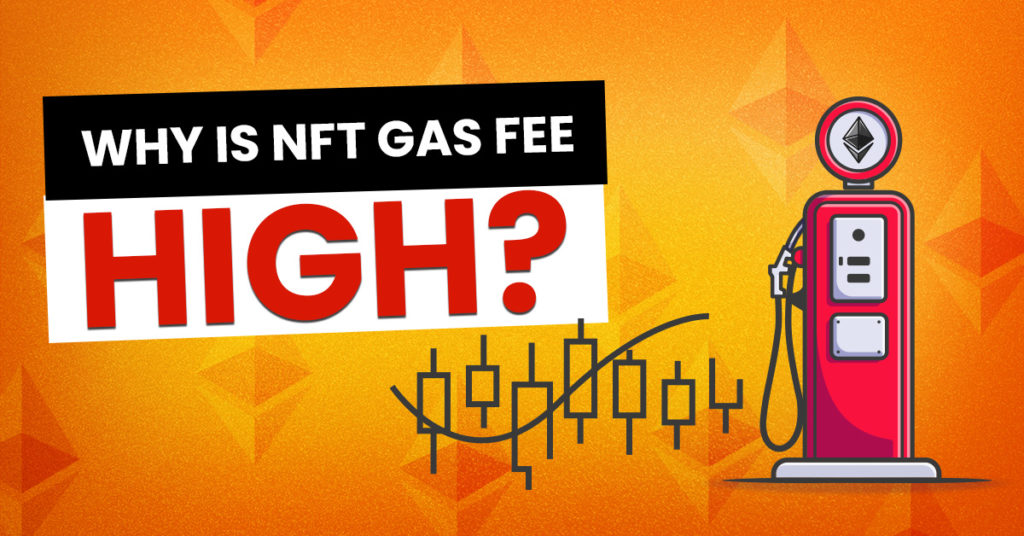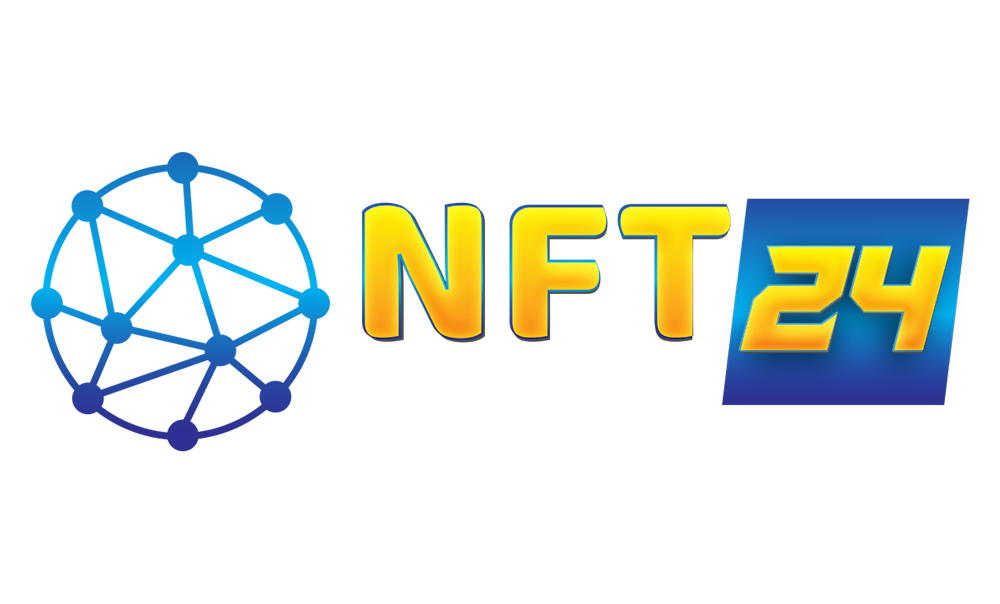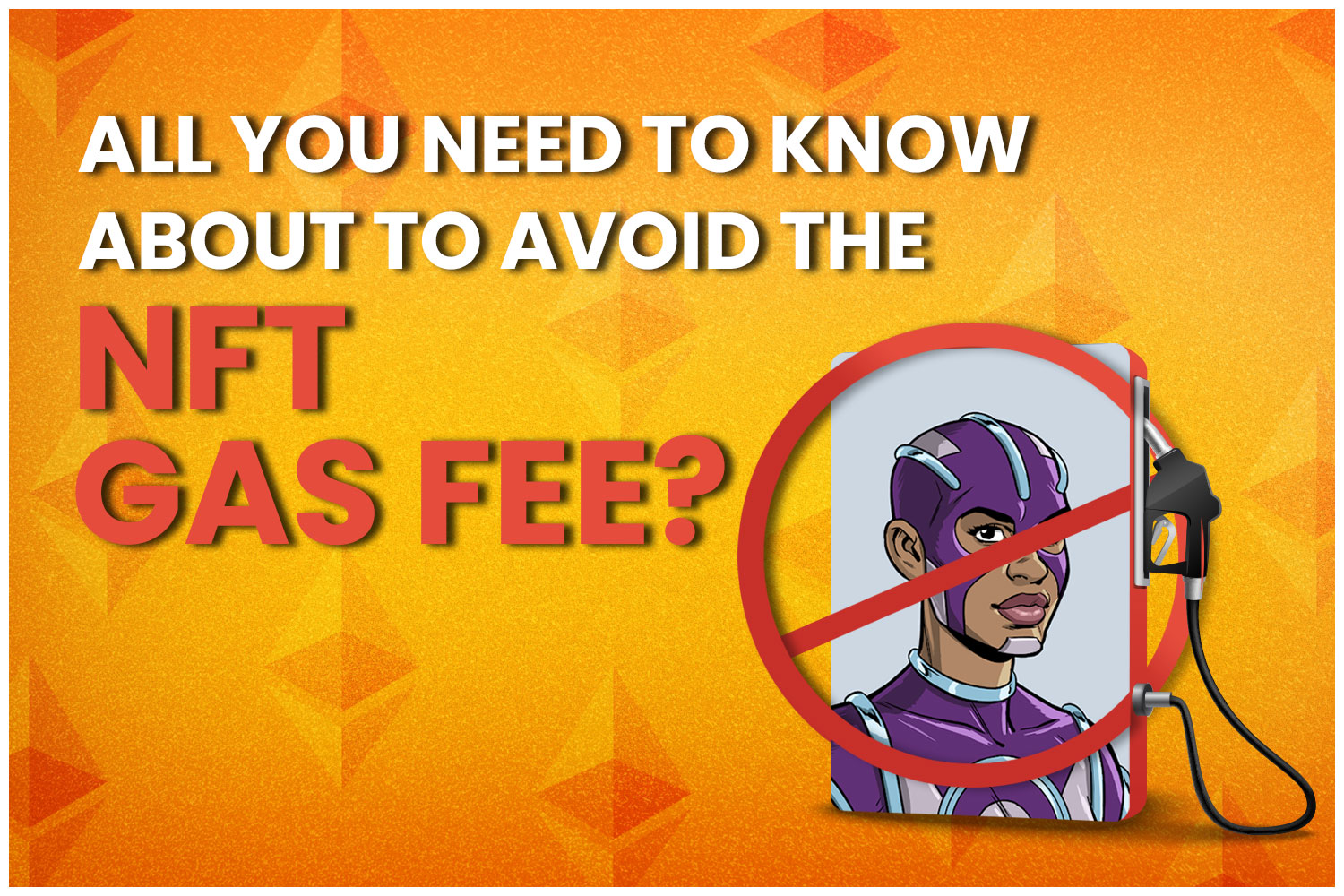When entering NFT gas free trading, you might question, what is gas in NFT? Well, the answer is quite simple, the gas fee of NFT is the requirement to efficiently run transactions made on blockchain and fulfill the required energy cost.
NFT gas meaning derives from blockchain technology where transactions need to be approved by paying in the blockchain’s native currency. For example, if you are buying an Ethereum-based NFT, then you will pay the gas fee in Ether (ETH), for Solana-based NFTs, you need to deposit SOL tokens, and the same is the case with other blockchains.
Furthermore, there is no fixed gas fees NFT. They all range in different prices based on various factors such as a blockchain’s consensus mechanism, block time, traffic, etc.
To be precise two reasons hugely affect the cheapest nft gas fees. First is the Block time meaning how much a blockchain can create blocks within a chain, while transaction throughput is the transaction speed to complete one single block.
You might be curious to know why these transactions are not free of cost or easily available? For instance, traveling on a busy highway will cost you more fuel consumption — whereas the same route without traffic will cause less fuel damage. Still, in the first situation or the other, you’re supposed to travel to reach your destination.
Similarly, gas fees are required to maintain a blockchain without an interruption to the transactions or minors who’re accepting new contracts.
The cost of gas fees of NFTs increases in the same manner, as the demand for them increases. And it’s similarly essential to the computing power requirements of executing a transaction.
Although Ethereum works based on a specified algorithm termed proof of work. In addition to the blockchain, miners have to implement some algorithms and solve complex puzzles or problems.
Thus after completion, transactions are made to get transferred into the blockchain. A successful Blockchain thus continues to make further transactions.
Gas fees NFT explained:
Just give you a short idea about the average NFT gas fee and crypto for different blockchains. Here’s a chart for you to know about how are gas fees calculated:
| Blockchain | Max Block size | TPS | Consensus model | Measurement unit |
| Bitcoin | 1MB | 4.6 | PoW | Satoshis |
| Ethereum | Varies | 70 | PoW | Gwei |
| Solana | 10MB | Max 50,000 | PoH | none |
Related Articles
- 5 Ways to Earn Money from NFTs – How to create an NFT?
- NFT Marketing Strategies: 17 Free Ways to Promote Your NFT Collection
- What are the Hidden Costs of NFTs?
Does Bitcoin have gas fees?
Bitcoin blockchain, the world’s largest and oldest network, has also a certain gas price in crypto which is validated by the miners for “diminishing block subsidy.” Miners are incentivized when block rewards fall over time via the bitcoin transaction fee.
Bitcoin’s block size is 4MB, so only one block can fit transactions. If a transaction is too high to take up most of the block, then others with fewer transactions fit in.
Additionally, in the Bitcoin blockchain, the unit measurement is Satoshis or sats. In 2010, the minimum transaction fee was 0.10 BTC but later it increased after the demand for Bitcoin surged high.
You might be wondering if there is network congestion, how are gas fees calculated in the Bitcoin blockchain? Well, the answer is quite simple, the more traffic, the higher the fee. However, the crypto gas fees are determined by the exchanges and platforms.
Ethereum gas fees calculator?
ETH gas fee means Ethereum blockchain gas fee for making a crypto or NFT transaction. To know the Ethereum gas price calculation, you must first learn about Gwei.
Gwei is the unit of measurement for Gas price of NFT on the Ethereum blockchain, i.e., 1 gwei = 0.000000001 ETH. So, a gas fee of 50 gwei would be equivalent to 0.000000050 ETH.
However, the calculation doesn’t end here, instead, Ethereum follows a proper equation:
Total Gas Fee = Gas units (limit) x (Base fee + Tip).
Gas limit
A gas limit is the pre-set amount of gas made available for a transaction. A limit can be imposed on the expansion of the gas. However, the total transaction fee is the product of the gas limit and gas price.
Gas prices can be lower or higher depending on the transaction fee. If it’s equal, the transaction appears to be successful and vice versa. The prices to be precisely mentioned are the given market prices depending upon their need.
A Gas limit means the amount of gas fee in NFT that a user is obliged to pay to complete the transaction. For standard token transactions on the Ethereum blockchain, wallets have a gas limit of 21,000 gwei. This amount can be adjusted by the user if they want to add more or less.
In the Ethereum blockchain, the person with high gas limits gets priority for transactions in the next block. When the traffic is high, the blockchain needs time to maintain its transaction speed, so users compete based on these gas limits.
Note that, since this is a competition if your transaction fails due to a low gas limit, the amount cuts from the wallet with no refund. But if there is a difference between the gas limit and the gwei amount, then the remaining funds are sent back to the wallet.
Base Fee
The base fee is also part of the Ethereum gas price calculation defined as the amount used for the reserve price in each block. Since Ethereum’s current version is the proof-of-work model, the blocks are burned and a new supply of Ether is made, which requires a base fee to miners as compensation.
Each base fee goes with the gas fee and the users are also encouraged to give a priority tip to speed up the transaction process.
Example:
To explain in simple words with an example, if you’re buying an NFT for 2 ETH on the Ethereum blockchain. The gas limit is set at 21,000, the base fee is 50 gwei, and you add a 20 gwei priority tip. So, based on the formula:
Total Gas Fee = 21,000 x (50 + 20).
The answer is 1,470,000 gwei or 0.001470 ETH.
So, when you mint an NFT you will be liable to pay a 2.001470 ETH gas fee in NFT but the marketplace will receive 2 ETH and the tip will be given to miners to speed up the transaction and the base fee for the block will be burned as well.
If you are wondering what is gas fees in crypto, use the same formula to calculate for ETH and you will get a fixed figure for the crypto gas fees.
On the Ethereum blockchain, when a lot of users do transactions and pay a gas fee in NFT, they are supposed to pay high fees, sometimes even higher than the NFT itself. Many users have complained about this aspect as well.
So far, Vitalik Buterin and the ETH dev team have made progress. The good news is that Ethereum the merge is expected to lower the gas fee and speed up transactions. The blockchain has completed all its testnet and will soon transition to the staking model in September 2022.
How are SOL gas fees calculated?
On the Solana blockchain, SOL is the native cryptocurrency used to mint NFTs and pay the NFT gas fee. However, compared to Ethereum, the gas fees on Solana don’t increase due to traffic and are cheaper.
In the Solana blockchain, minting NFT takes three steps of transactions to complete namely, Network, Wallet, and Crypto exchange fees. Solana offers a transaction fee of just $0.00025, making it easier to buy NFTs on the blockchain.
The reason for this cheap NFT gas fee is that they have faster block time and block size when compared with Ethereum blockchain.
Solana recently introduced a priority-fee method, but it’s completely different from Ethereum’s. In the Solana blockchain, the person who pays the highest gas fee will be prioritized within a certain app or protocol instead of the whole network.

Why is NFT Gas Fee High?
When you’re dealing with non-fungible tokens, it’s necessary to pay a price. Creating, buying, and selling an NFT requires gas fees.
Based on the conventional concept of “demand and supply”, gas prices can make it difficult for NFT creators to make successful transactions. Sometimes soaring prices lead to the cost of actual assets to be sold or bought.
Generally, it’s technical for newcomers to understand the requirement of gas fees for transferring their NFTs. Thus the concept of gas expansion and its pricing must be cleared before making a transaction or you’ll end up losing your earnings or even getting a penalty.
What is gas fee in crypto?
The crypto gas fees are solely determined by the exchanges or platforms you are using. As mentioned above, you can either calculate it manually by formula, or you can just determine it when you are about to buy cryptocurrency.
Cryptocurrency is one of the popular markets that run blockchain networks. You might think why should you pay the crypto gas fees, well it’s all to maintain the operations within the blockchain and incentivize the miners for validating and securing the network.
How to Avoid High Prices for Gas Fees of NFTs
As it is a necessity to put forth some gas fees for NFTs, there are ways you can escape from paying a higher sum.
- Pay once to save NFTs and avoid paying again! Be smart to make transactions. Try to make your transactions around late at night, early in the morning, or anytime when the traffic isn’t high on the blockchain.
- You can explore any other blockchain and get rid of worries about paying gas fee NFT. Worldwide Asset Exchange is a free blockchain platform that offers free and quick transactions without any complications.
- Another temporary solution is, checking out for time-specific transactions for cheaper gas fees NFT. Estimate your appropriate time to make a transaction. However, this is not always successful, so you need to keep trying until you acquire it.
- Set a gas limit so that a miner processes it later, based on profit. Transactions will process according to profitable outcomes for the miner.
However, there isn’t any defined way or algorithm to escape the high-priced gas fee of NFTs.
Final words of Gas Fee NFT
Now that you know the gas fees crypto meaning, it will be easier for you to make clever transaction decisions when buying NFTs. If you think Ethereum asks for an expensive gas fee for NFTs, you can always look for other blockchain networks such as Solana.
Additionally, Ethereum the Merge will be transitioning from the miner-centric model to a validator-centric model, which is expected to lower gas fee and increase transaction fees. Want to buy NFTs without spending much on gas fees? Visit our shop which features the latest NFT collections to make them part of your collection. P.S: We also feature the upcoming NFT projects that can help you get first in line to own what’s coming next in the NFT world.
#nftgasfee #nft gas fee












